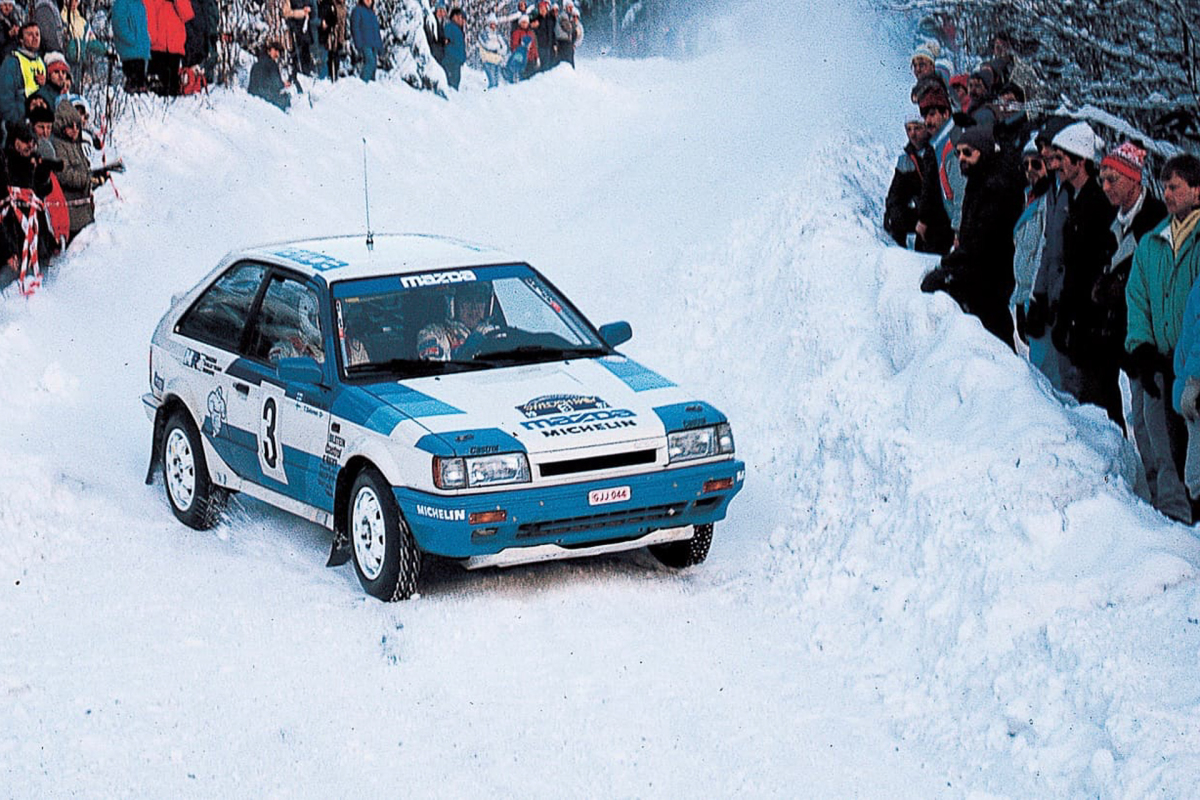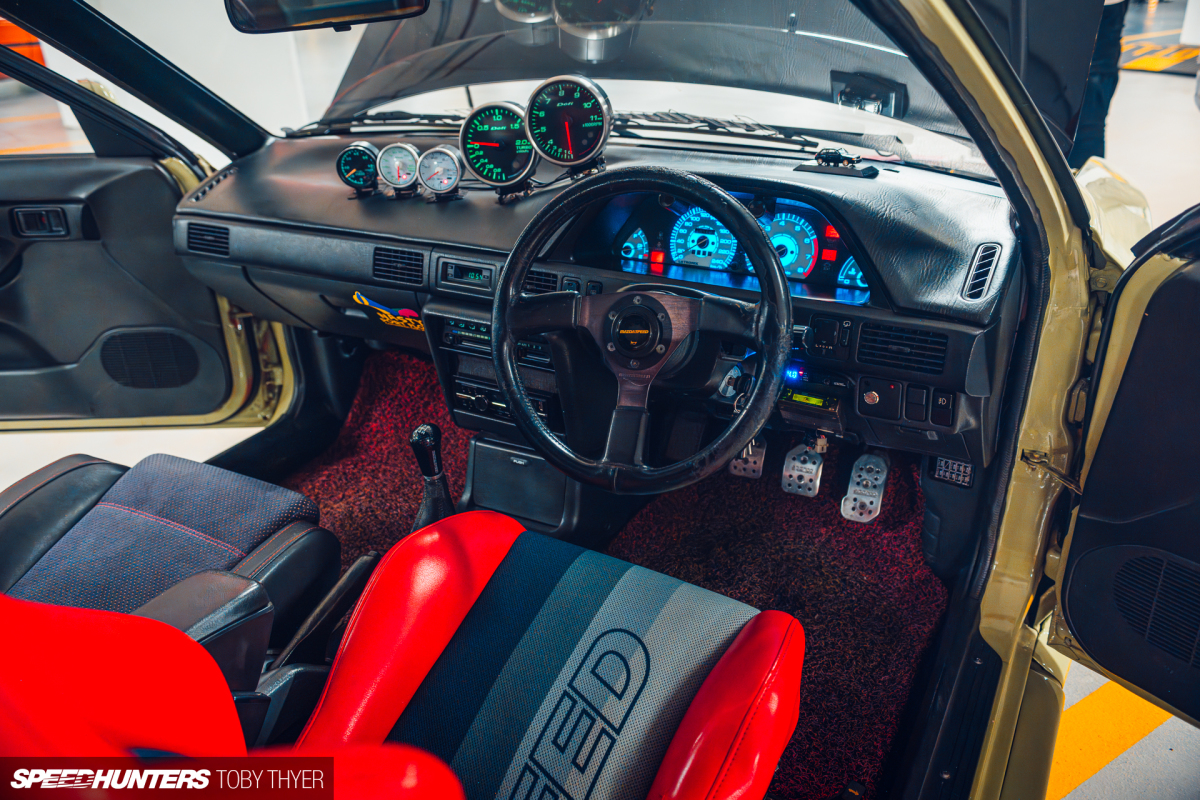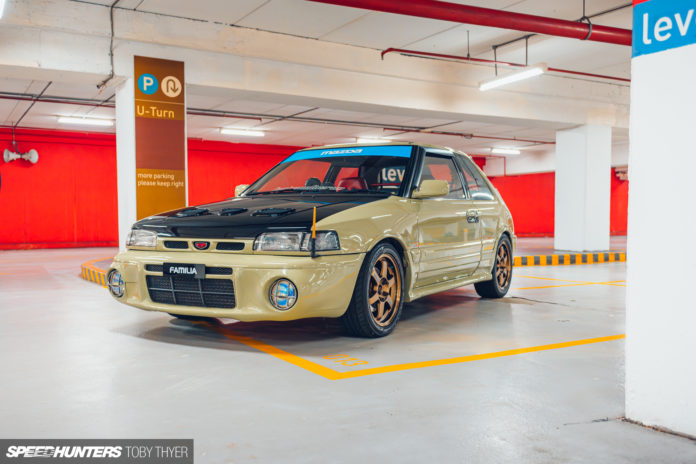In a quiet corner of Retro Havoc 2024, amidst a gathering of 950 modified cars, sat an unassuming Mazda, seemingly separated from the rest of the show.
Whether due to a late arrival by its owner, Tiup, or the discerning eye of Retro Havoc organisers Alie Kuoppa and Farah Darlings, the little Mazda Familia had found itself in its own display area. But what makes this ’90s hatchback so special that it merits a spotlight? Honestly, not much at first glance. The Familia is unremarkable in most trim levels, but it does share its family tree with some notable relatives.
The Familia name has been around since 1963, debuting in Japan as a two-door van – then other body styles – after being penned by 25-year-old Giorgetto Giugiaro. It was known as the Mazda 800 in overseas markets. The second generation Familia (Mazda 1000) arrived in 1967, again in a variety of body forms, and with four-cylinder engines underpinning the model. There was an exception, though – the Familia Rotary (aka R100) which featured Mazda’s first production rotary engine, the 10A. The high-performance Familia’s motorsport success – including a notable performance at the 1969 Spa 24 Hours – marked Mazda’s early triumphs and laid the groundwork for future legends like the 787B. In the early 1970s, Mazda’s rotary engine was also fitted to the Grand Familia, better known as the Savanna or RX-3.

But we’re not here to talk rotaries.
Eventually, the Familia line was exclusively powered by four-cylinder engines. The rotary, however, continued, most notable in the Mazda RX-7. That leads us, in a roundabout way, to the world of rally.

For a brief time, Mazda Rally Team Europe used an RX-7 in Group B. Despite being underpowered and rear-wheel drive, the Mazda did podium on the Acropolis Rally. Unfortunately, that was the end of the line; Mazda didn’t want to back the development of an all-wheel drive RX-7, by which time Group B’s curtains were closing. Enter Group A and the Mazda Familia in BF-series form.
At its peak in the early 1990s, the BG series Familia – or 323 in export markets – featured an all-wheel drive, turbocharged 1.8L four-cylinder powertrain in its highest-performance JDM production models. For homologation purposes, 2,200 Familia GT-Rs and 300 Familia GT-Ae (a motorsport base with lighter weight and featuring a close-ratio gearbox among other changes) variants were produced exclusively for the Japanese domestic market. While the Familia couldn’t match the likes of Lancia, Ford, Toyota and Subaru on the World Rally Championship stage, the 300hp Group A car was far from a failure.

While the sixth-generation Familia I spotted at Retro Havoc looks like a GT-R/GT-Ae with the distinctive rally-style front bumper, grille, vented bonnet, and five-stud hubs, it is not. It’s not even a GT-X – the entry all-wheel drive turbo BG-series Familia. It started life as a lowly front-wheel drive, naturally aspirated variant sold new in Malaysia.
As per Malaysian car laws, it’s still front-wheel drive, but that’s where most similarities between how it left the factory and how it presents now begin and end. On the quest to build the best BG Familia hatchback with the resources available to him, Tiup turned to Japan-based wreckers and auction sites to source all of the OEM and aftermarket parts.

Inside, the car features GT-R leather seats front and rear – the driver’s seat having since been swapped out for a rare Mazdaspeed recliner – plus a Mazdaspeed steering wheel, 240km/h speedometer, and various Defi gauges.

Under the hood, the original 1.5L mill has given way to a BP 1.8L turbo powerplant from a GT-R. With locally-fabricated intake and exhaust manifolds and other power-making modifications in the mix, the engine is making much more than its original 210hp. That would be a problem for the driveline if the car was all-wheel drive – the factory AWD gearboxes were a weak link – but not so with all that power being sent to the front wheels. Although, traction is an issue.
Despite not being the Familia model it visually emulates, Tiup’s build represents everything great about Malaysian car culture at an enthusiast level. Where there’s a will, there’s always a way.
Toby Thyer
Instagram _tobinsta_
tobythyer.co.uk
More stories from Malaysia on Speedhunters







